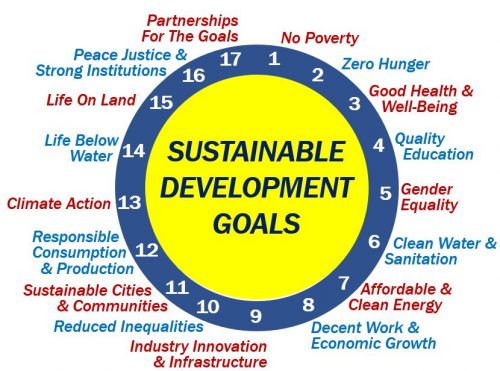Infrastructure is key to unlocking sustainable development goals, says a new report. Efficient infrastructure policy and well-targeted and disciplined investment are crucial for SDGs. The letters SDGs stand for Sustainable Development Goals. The Infrastructure Transition Research Consortium (ITRC) and UNOPS published the report on 22nd October 2018. UNOPS = United Nations Office for Project Services.
The report is titled ‘Infrastructure: Underpinning Sustainable Development.’ It is the result of extensive research into the influence of non-networked and networked infrastructure on all 17 SDGs.
Water, digital communications, energy, waste, and roads, for example, are networked infrastructures. Buildings and facilities are examples of non-networked infrastructure.
According to a press release by the University of Oxford, which led the study:
“It (the report) highlights the need to understand infrastructure as an integrated system of systems – the interdependencies across sectors requires us to break down the ‘silo mentality’ in infrastructure development.”
Infrastructure projects’ effects on sustainable development goals
The authors focused on real-life projects that UNOPS implemented across the world. They found that infrastructure projects can have several effects across different sustainable development goals as well as their targets.
The Report found that networked and non-networked infrastructure projects influence 72% and 81% of sustainable development goal targets respectively. Their findings reinforce the key role that infrastructure will play towards attaining the SDGs.

Regarding the Report, Grete Faremo, UNOPS Executive Director, said:
“Infrastructure, in particular, underpins all of the SDGs. It plays a critical role in society because it can influence development far into the future – both positively and negatively. This is why it is vital to understand the influence that infrastructure systems have on the SDGs.”
“We are proud to present this report together with Oxford/ITRC, and to reaffirm our commitment to helping people build better lives and countries achieve peace and sustainable development.”
2018 Global Engineering Conference
The Report’s publication coincides with the 2018 Global Engineering Conference in London. The Institution of Civil Engineers is hosting the Conference.
UNOPS Director of Infrastructure and Project Management, Nick O’Regan, is presenting the Report today during a keynote speech. He will explore the impact that urbanisation, climate change, and population growth may have on achieving the SDGs.
Mr. O’Regan said:
“Our children and the children of those we serve have great expectations of their future; it is on all of us to create an environment that is resilient, sustainable and equitable – and the built environment can be an enabler or an obstacle to this.”
“Together with our partners the ITRC, we have focused on the SDGs as a common framework to work towards an understanding of how we can contribute to sustainable development. This will help governments and their development partners make better-informed decisions within this uncertainty.”
Infrastructure can be a ‘Trojan horse’
Professor Jim Hall, Professor of Climate and Environmental Risk at the Environmental Change Institute, University of Oxford, said:
“Though our research started from a sustainability perspective, in particular, the central role that infrastructure has in climate change mitigation and adaptation, our work has attracted growing attention from finance ministries and infrastructure units that tend to be focused on the role of infrastructure in economic growth and productivity.”
“In that sense, infrastructure can be a “Trojan horse” that brings sustainability considerations within the purview of the economic imperatives of most governments.”
“The collaboration between ITRC and UNOPS has been a very productive one, with UNOPS bringing us new challenges from very diverse contexts around the world and opportunities for our work to have an impact on the ground, which is what motivates my team. This report provides a next important step in that journey.”
The term ‘sustainable development goals’ refers to infrastructure projects which do not deplete our natural resources. If something is sustainable, it means we can use or maintain it for a very long time. Sustainable growth, for example, refers to the ability to grow consistently without hitting or creating future problems.

